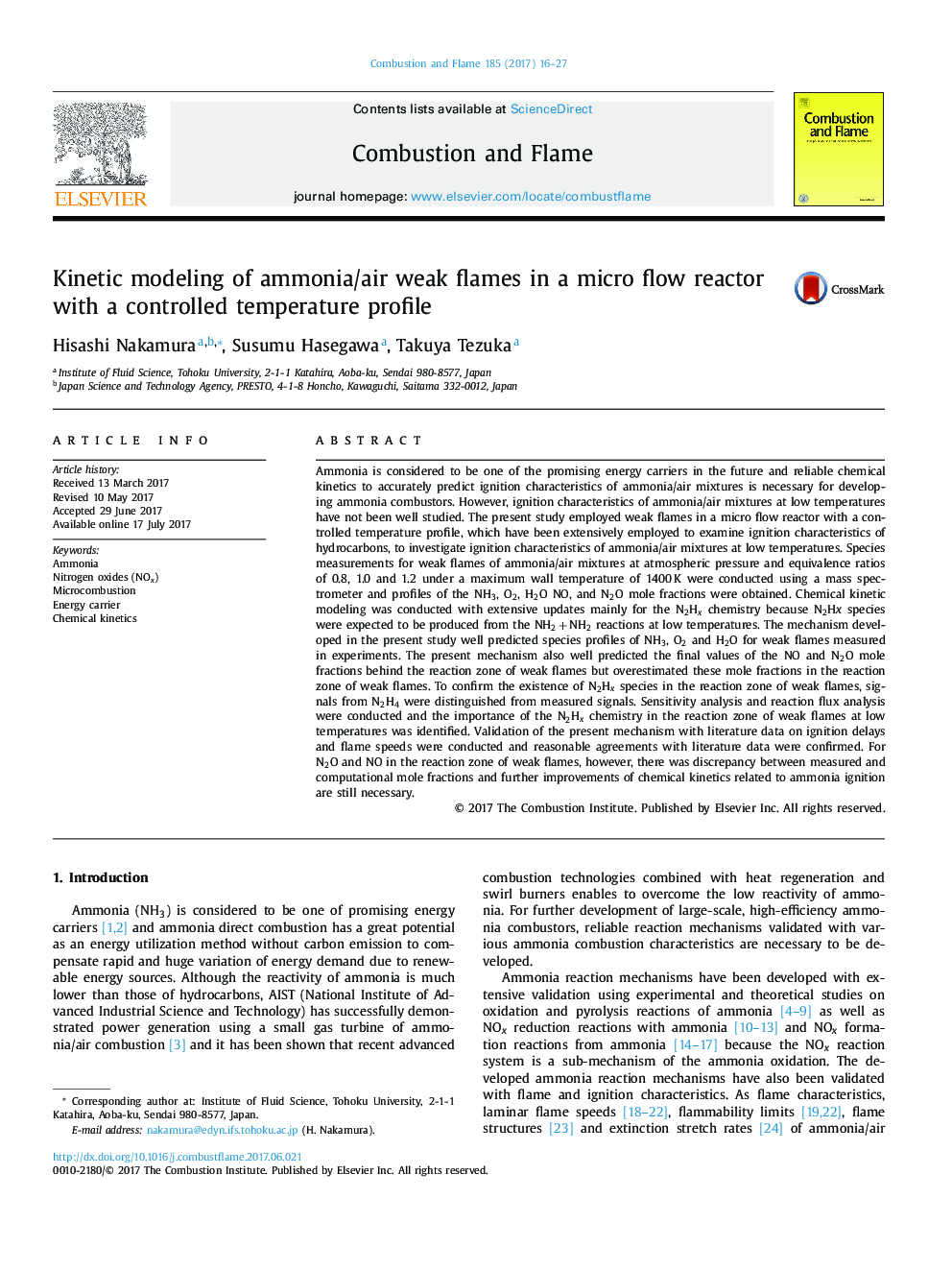| کد مقاله | کد نشریه | سال انتشار | مقاله انگلیسی | نسخه تمام متن |
|---|---|---|---|---|
| 6468042 | 1423552 | 2017 | 12 صفحه PDF | دانلود رایگان |
Ammonia is considered to be one of the promising energy carriers in the future and reliable chemical kinetics to accurately predict ignition characteristics of ammonia/air mixtures is necessary for developing ammonia combustors. However, ignition characteristics of ammonia/air mixtures at low temperatures have not been well studied. The present study employed weak flames in a micro flow reactor with a controlled temperature profile, which have been extensively employed to examine ignition characteristics of hydrocarbons, to investigate ignition characteristics of ammonia/air mixtures at low temperatures. Species measurements for weak flames of ammonia/air mixtures at atmospheric pressure and equivalence ratios of 0.8, 1.0 and 1.2 under a maximum wall temperature of 1400â¯K were conducted using a mass spectrometer and profiles of the NH3, O2, H2O NO, and N2O mole fractions were obtained. Chemical kinetic modeling was conducted with extensive updates mainly for the N2Hx chemistry because N2Hx species were expected to be produced from the NH2â¯+â¯NH2 reactions at low temperatures. The mechanism developed in the present study well predicted species profiles of NH3, O2 and H2O for weak flames measured in experiments. The present mechanism also well predicted the final values of the NO and N2O mole fractions behind the reaction zone of weak flames but overestimated these mole fractions in the reaction zone of weak flames. To confirm the existence of N2Hx species in the reaction zone of weak flames, signals from N2H4 were distinguished from measured signals. Sensitivity analysis and reaction flux analysis were conducted and the importance of the N2Hx chemistry in the reaction zone of weak flames at low temperatures was identified. Validation of the present mechanism with literature data on ignition delays and flame speeds were conducted and reasonable agreements with literature data were confirmed. For N2O and NO in the reaction zone of weak flames, however, there was discrepancy between measured and computational mole fractions and further improvements of chemical kinetics related to ammonia ignition are still necessary.
Journal: Combustion and Flame - Volume 185, November 2017, Pages 16-27
